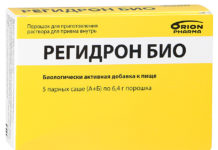Thanks to its surprisingly fresh aroma, mint is considered one of the most famous plants used not only in cooking and cosmetology, but also in medicine. In order for the use of the plant to bring real benefits, it is necessary to take into account the medicinal properties and contraindications of mint.
Different types of mint vary in the level of biologically active substances, respectively, and their pharmacological value is different. The richest healing potential of peppermint.
Material Content:
Chemical composition and calorie content
Mint is a perennial plant with lilac inflorescences, which has a spicy menthol odor and a light refreshing taste. The shape of the leaves in different plant species varies from semicircular to elongated.
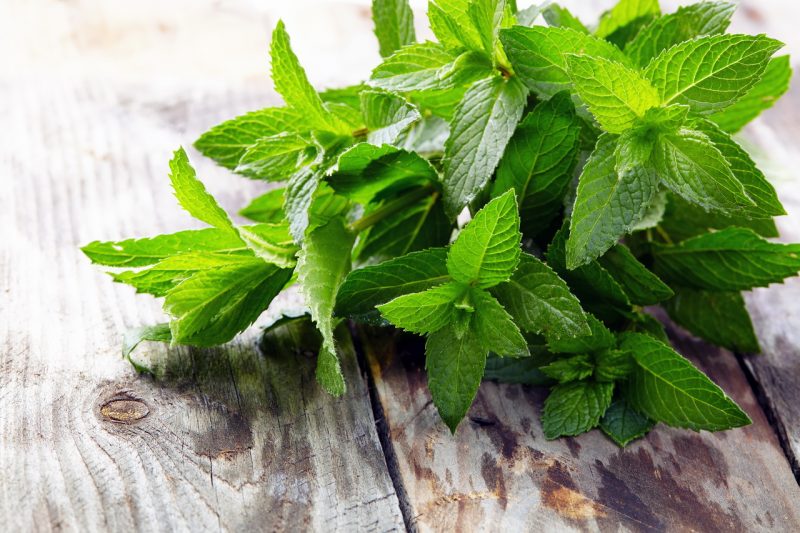
The plant has a characteristic “mint” smell due to the essential oil contained in the leaves of mint. Peppermint oil can contain up to 60% menthol - an organic substance that has healing properties. Due to the large amount of menthol, mint has become widespread and in demand in various fields of human activity.
The composition of the plant includes:
- vitamins A, C, group B, PP;
- trace elements - manganese, zinc, copper, iron;
- macrocells - potassium, calcium, sodium, magnesium, phosphorus;
- tannins;
- gallic acid;
- apigenin from the flavonoid group;
- bitterness.
Nutritional value: 100 g of mint contains 3.75 g of protein, 0.94 g of fat, 6.89 g of carbohydrates, 8 g of dietary fiber, 78.65 g of water.
Due to its rich chemical composition and valuable medicinal properties, peppermint is officially recognized as a medicinal plant and is grown on an industrial scale.
Peppermint: healing and beneficial properties
The pharmacological potential of mint is due to the presence of essential oil and a rich chemical composition.
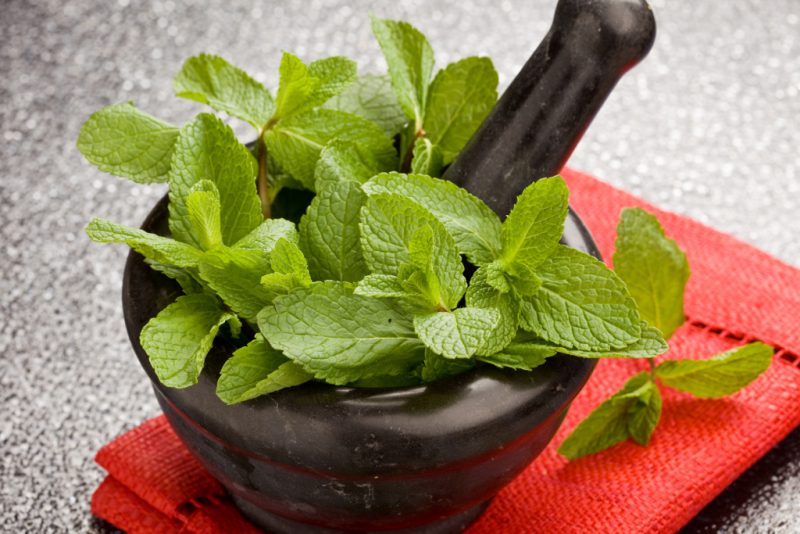
The list of medicinal properties of the plant is striking in its diversity and comprehensiveness of impact:
- possesses antioxidant activity;
- calms the nervous system;
- relieves pain;
- promotes outflow of bile;
- removes excess water from the body, relieves swelling;
- increases the intensity of the brain;
- stops inflammatory processes;
- relieves headaches and migraines;
- improves digestion;
- helps with flatulence, diarrhea and vomiting;
- relieves hepatic colic;
- facilitates breathing in diseases of the respiratory tract and coughing attacks;
- reduces toothache;
- provides a diuretic effect;
- relieves angina attacks, stimulates cardiac activity;
- It has a tonic and restorative effect on the body.
In addition, the disinfecting and refreshing properties of peppermint are used to eliminate bad breath.
A pronounced therapeutic effect is observed only when using natural grass, the use of synthetic substitutes for mint or menthol can cause adverse reactions of the body.
The benefits of plain and peppermint
Unlike other species, peppermint and meadow mint (Japanese) contain a record amount of menthol. The characteristic refreshing taste and its cooling properties can be found in toothpaste, cosmetic products or various confectionery products.
In addition, menthol is used in the manufacture of pharmaceuticals, as it has antiseptic and bactericidal properties, helps to dilate blood vessels, and also provides a sedative effect.

For medicinal purposes use:
- as an antispasmodic for the relief of convulsive conditions and stomach cramps;
- to eliminate nausea. Menthol substances effectively affect intestinal motility, irritating the mucosa and increasing contractions;
- to stop coughing attacks;
- to relieve muscle pain;
- externally - with inflammatory processes and fungal skin lesions.
Upon contact with the skin, menthol irritates the nerve endings and contributes to their activation, causing a tingling sensation and a slight cold. As a result of the excitation of cold receptors, capillaries and small vessels located in the upper layers of the epidermis are narrowed, which contributes to the expansion of blood vessels in the deep tissues.
The substance also has a slight anesthetic effect.
As a rule, essential oils obtained from other types of mint are characterized by a low menthol content.
Application in traditional medicine
Folk recipes provide all kinds of ways to use mint or products based on it - teas and decoctions, infusions and juices, butter and tinctures.
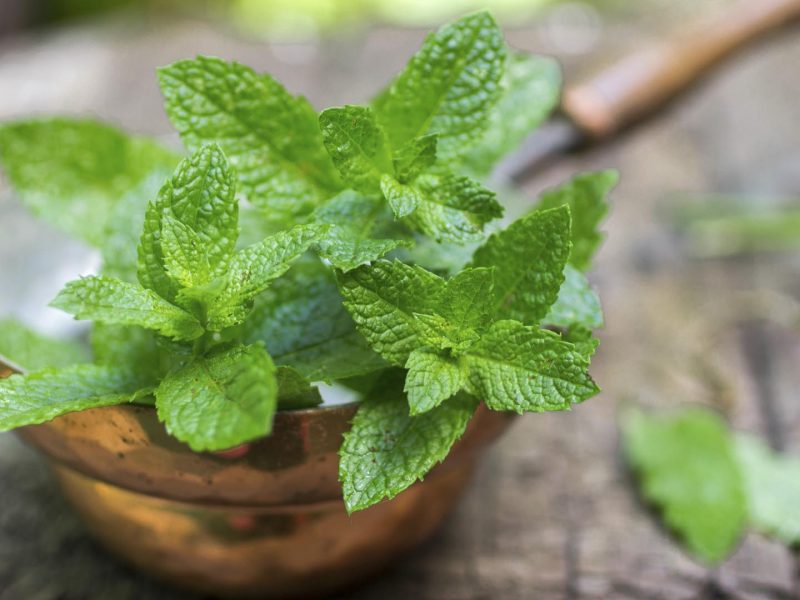
The collection of plant materials is carried out in dry weather in June-July - during this period, the flowering of mint begins and its healing properties reach a peak. Plants do not wash, but immediately laid for drying. It is important to prevent direct sunlight, which reduces its healing power.
Upon completion of drying, mint can be stored in glassware or linen bags for two years.
Tea with mint
The easiest way to not only enjoy the refreshing taste of mint, but also to support the body is to make mint tea. Preparation of the drink takes a minimum of time, and brings maximum pleasure and a healing effect.
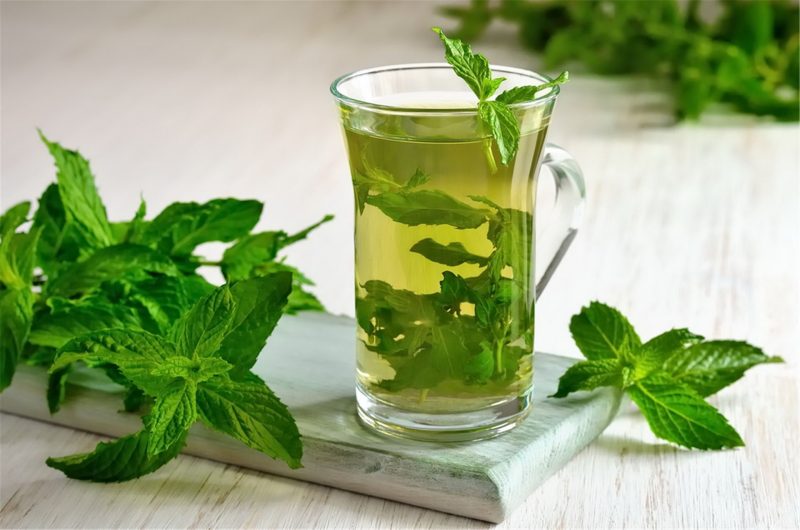
A few leaves of mint are brewed with boiling water and insisted for five minutes. Then filter and add sugar or honey, lemon, berries or spices. Mint tea can also be made on the basis of black or green tea, prepared in the usual proportion, or with the addition of herbal preparations with chamomile, linden, St. John's wort, rosehip, thyme.
In the cold season, the aromatic drink is drunk hot. Whereas in the summer heat it is appropriate to cool such tea and serve with pieces of ice.
Peppermint tea has a calming effect, quenches thirst well and helps restore strength after physical and mental stress.
Women are advised to drink peppermint tea during menstruation and menopause. Peppermint perfectly copes with the inherent monthly soreness, regulates the menstrual cycle and relieves the unpleasant symptoms of menopause.
Infusion and decoction
Peppermint infusion is a universal remedy for the treatment of diseases of the digestive tract, respiratory system and heart attacks. In addition, herbal decoctions are used for rinsing, inhalation and bathing.
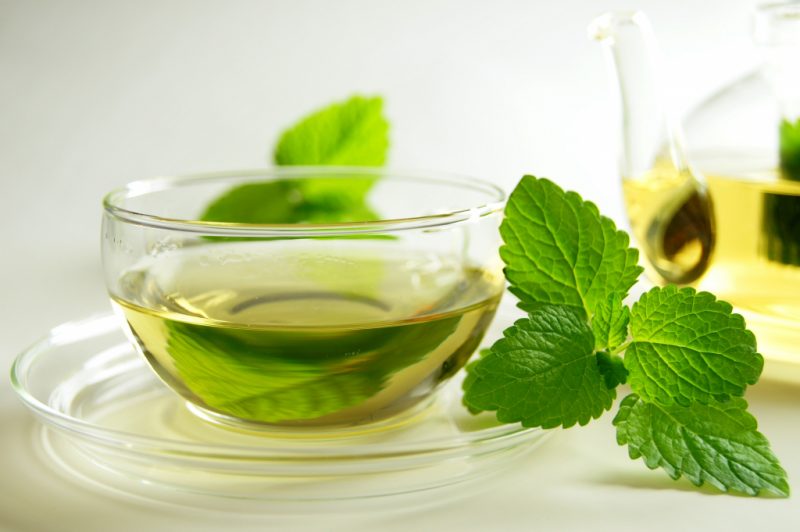
To prepare a daily dose of decoction for oral administration, take two teaspoons of the leaves of the plant and pour a glass of boiling water. Then insist for an hour. The indicated volume of infusion is taken warm twice a day - in the morning and in the evening.
When treating cough, honey is added to the broth.
To take therapeutic baths, a decoction is prepared from 50 g of mint and 8 liters of water. After infusion, add to the bath. The tool helps with rickets, scrofula and joint pain.
Peppermint essential oil
Peppermint oil has powerful healing properties. The essential oil of the plant has a pronounced therapeutic effect in the treatment of colds, loss of voice, cough, intestinal colic and spasms, increased nervous irritability, and is also part of the most common heart preparations - Valocordin, Validol.
In industrial conditions, the essential oil is obtained by distillation of plant materials of peppermint and meadow mint.

The use of essential oil is reflected in folk recipes:
- with colds. Inhalations - a glass of water and two drops of the product. Rubbing before bedtime - mix two oil drops with a baby cream or any vegetable oil. With a runny nose - rub a drop of essential substance between the fingers and apply to the wings of the nose;
- for pain. From a headache - apply a drop of the product to the whiskey. For pain in the abdomen - apply a few drops to the abdomen and massage in a circular motion clockwise. For arthritis - dissolve ten drops of the product in milk and pour into a bath with not too hot water. Take a bath for 15 minutes;
- with dysfunctions of the digestive tract. For heartburn - add two drops of kefir to a teaspoon of kefir and drink it.
To improve your well-being outside the home, you can use a scarf soaked in a small amount of essential oil. A few breaths will relieve dizziness or nausea, relieve nervousness and irritability, help with motion sickness in public transport and facilitate breathing when coughing.
Alcohol tincture
Despite the alcohol content, peppermint tinctures have a high level of useful properties inherent in fresh mint.
For 100 g of plants take 500 ml of alcohol. Store in a dark place for two weeks. After this time, the tincture is considered ready.
Peppermint tincture has a soothing and relaxing effect and is recommended for use in case of intestinal cramps, toothache, migraines and neuralgia.
For internal use, it is enough to dilute 15 drops of tincture in a quarter cup of drinking water and drink before eating.
For external use, a few drops of tincture are rubbed into the skin or applied to a sore spot in the form of a lotion or compress.
Fields of application
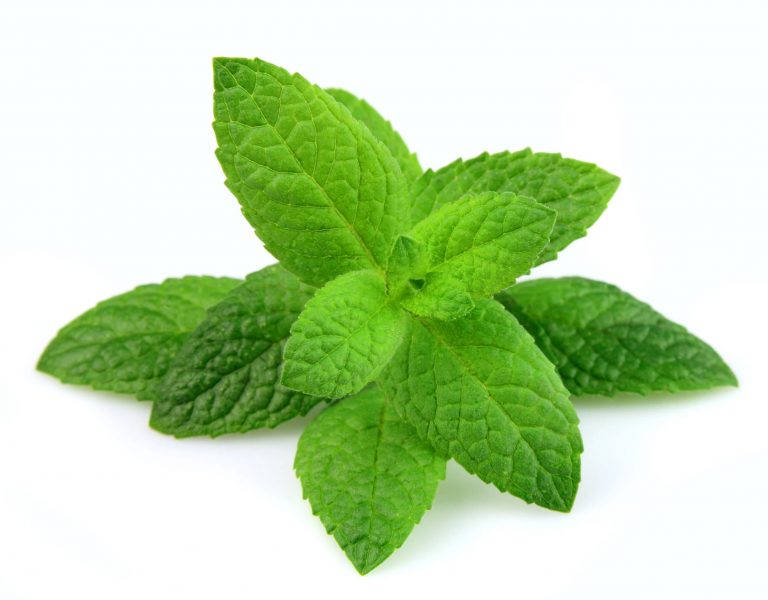
Thanks to its unique aroma and healing properties, mint has found application not only in medicine, but also in cosmetology, as well as cooking.
In cooking
Adding mint to food and drinks allows you to emphasize and improve the taste of dishes, give them piquancy and sophistication.

Dried mint is an indispensable component of the Provence herbs set of spices used for cooking meat and vegetable dishes, soups, sauces and preservation. Fresh mint leaves are used to decorate meat dishes and desserts. And peppermint oil and menthol are considered the best flavorings for alcohol-based drinks.
In cosmetology
For cosmetology, the antiseptic, anti-inflammatory and disinfecting and soothing properties of mint are of particular interest. Extracts from the plant are recognized as an effective tool to combat skin defects caused by irritations, rashes, acne.

If you wipe your face with ice cubes from a mint broth, you can not only easily eliminate inflammation of the skin, but also increase tone and elasticity, improve blood circulation and complexion, eliminate small wrinkles and age spots.
Combing with a massage brush with drops of peppermint oil applied helps strengthen and grow hair. After the massage procedure, the hair must be washed.
And if you add a few drops of essential oil to the toothpaste, you can quickly and safely whiten your teeth, and at the same time refresh your mouth.
Peppermint during pregnancy and breastfeeding
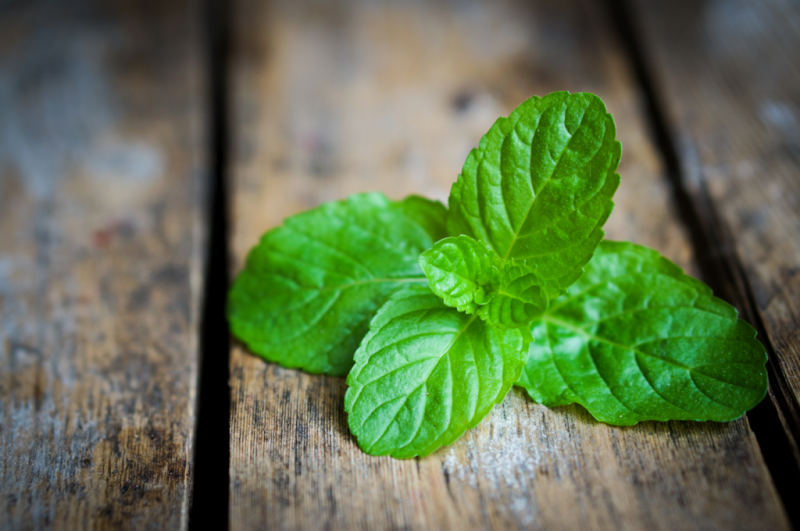
The use of mint during the expectation of a child is not prohibited, since the plant has a beneficial effect on the woman's body:
- calms nerves, reduces irritability and irritability;
- improves sleep;
- relieves dizziness;
- eliminates puffiness;
- helps to cope with toxicosis;
- during colds - reduces fever, fights cough.
Nevertheless, pregnant women should not abuse the use of peppermint drinks, as the plant can provoke an allergy attack, decreased pressure and impaired renal function.
Before introducing mint tea into the diet of a pregnant woman, it is best to consult a doctor.
Contraindications and possible harm
Despite the huge list of indications for the use of mint, there are limitations, the non-observance of which can lead to the development of side effects.
First of all, mint is contraindicated for use by people with low acidity of the stomach - the grass has the property of reducing the production of gastric juice and can lead to gastrointestinal dysfunction.
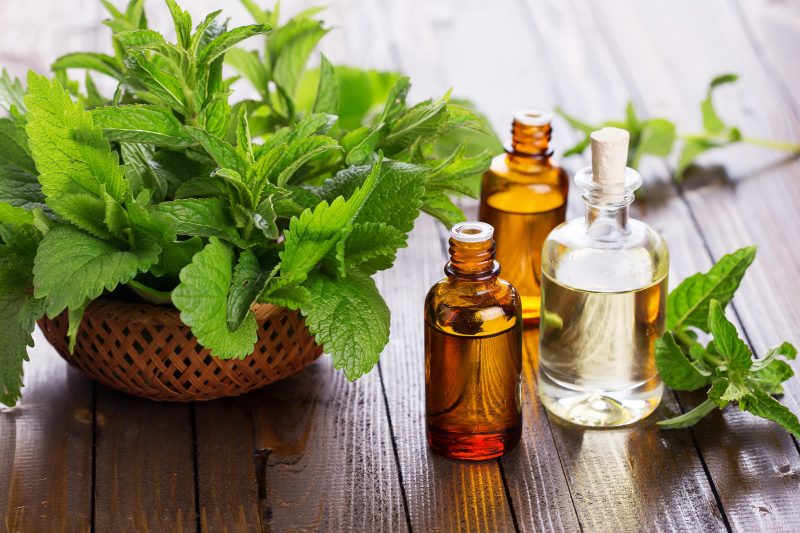
In addition, mint is contraindicated:
- small children;
- men - like a plant that reduces sex drive;
- with infertility;
- with exacerbation of varicose veins;
- to drivers;
- hypotension;
- allergy sufferers.
A good therapeutic effect of peppermint is the result of a moderate and competent use of its properties. While abuse of the plant will not bring benefits and may worsen well-being.







